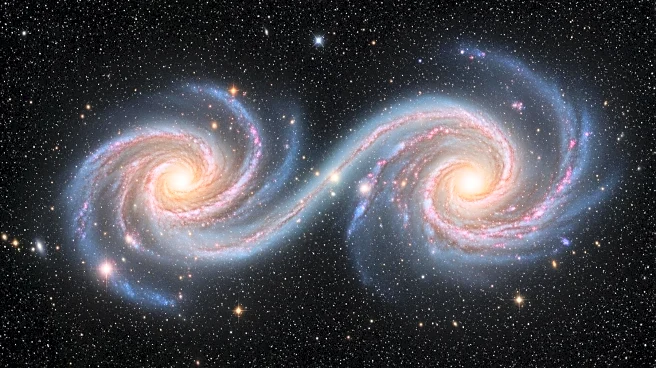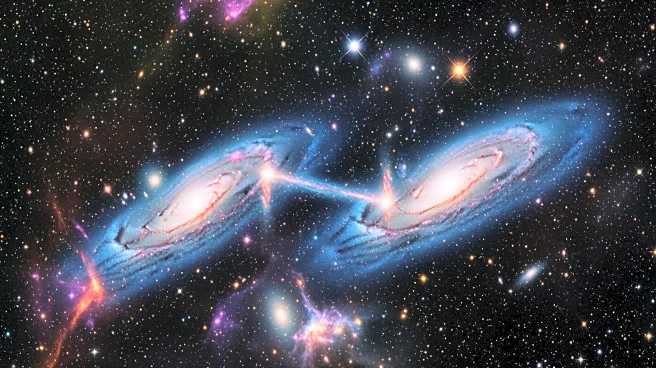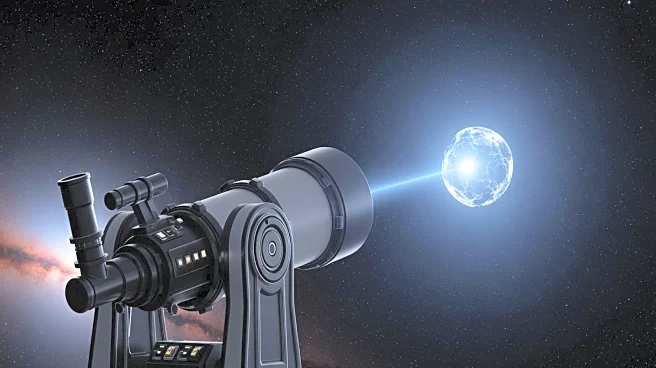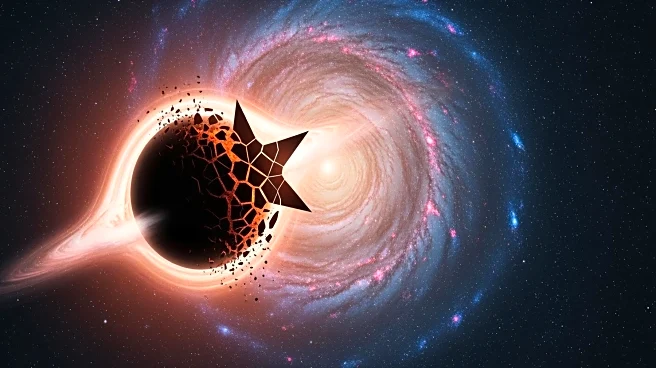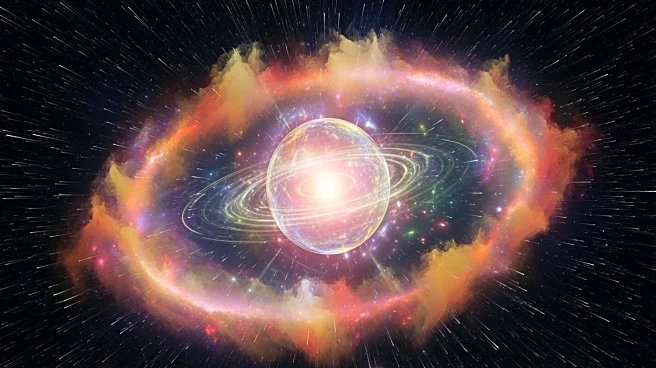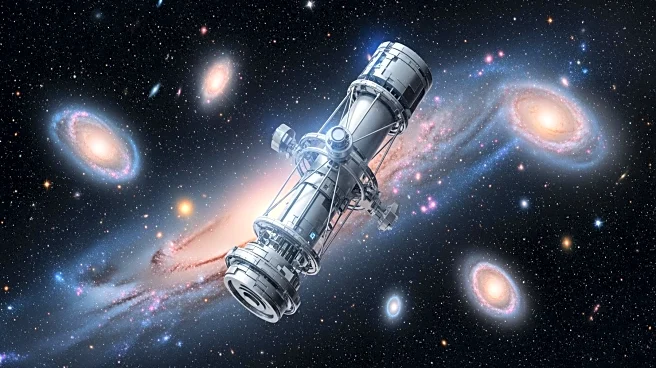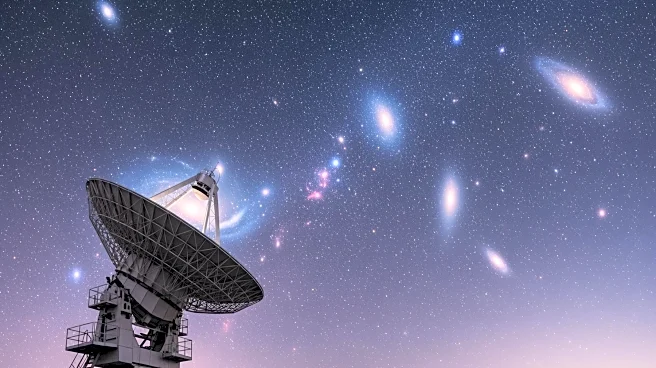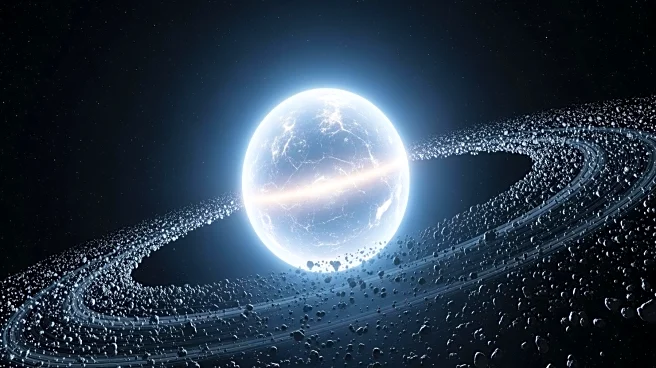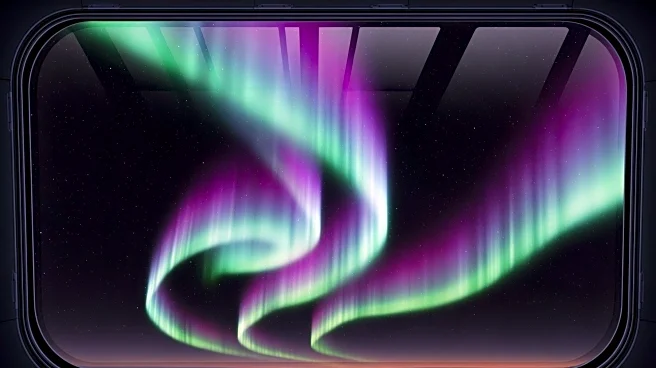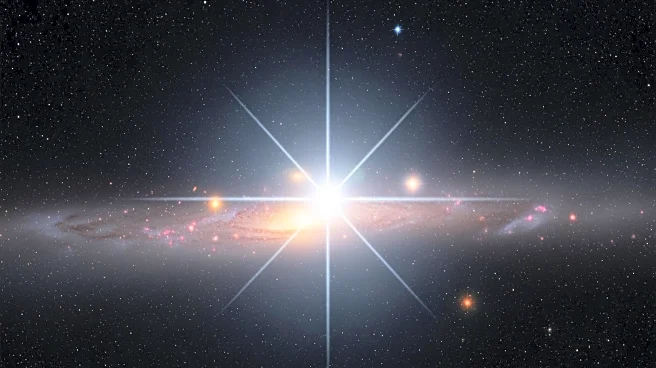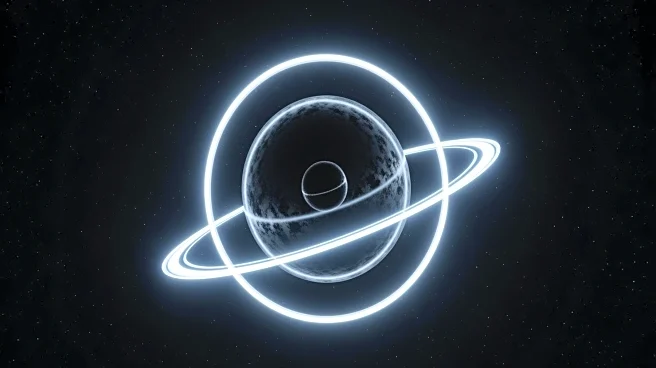What's Happening?
Scientists at The University of Western Australia's node of the International Centre for Radio Astronomy Research (ICRAR) have discovered a massive gas bridge stretching about 185,000 light-years between
two galaxies, NGC 4532 and DDO 137, located 53 million light-years from Earth. This structure, along with a tail of gas extending 1.6 million light-years, is the largest feature of its kind ever recorded. The study, published in the Monthly Notices of the Royal Astronomical Society, reveals that tidal forces and proximity to the Virgo cluster play a crucial role in the observed gas dynamics. The discovery was made as part of the Widefield ASKAP L-band Legacy All-sky Survey (WALLABY), which maps hydrogen gas throughout the Universe using the ASKAP radio telescope.
Why It's Important?
This discovery provides critical insights into how galaxies evolve over time, particularly in dense environments like the Virgo cluster. Understanding the dynamics of these gas bridges helps scientists learn how galactic gas is redistributed and the conditions under which galaxies may form stars. The findings contribute to a broader understanding of the most massive structures in the Universe and their life cycles, offering a unique opportunity to study interactions similar to those in our own Milky Way and Magellanic System.
